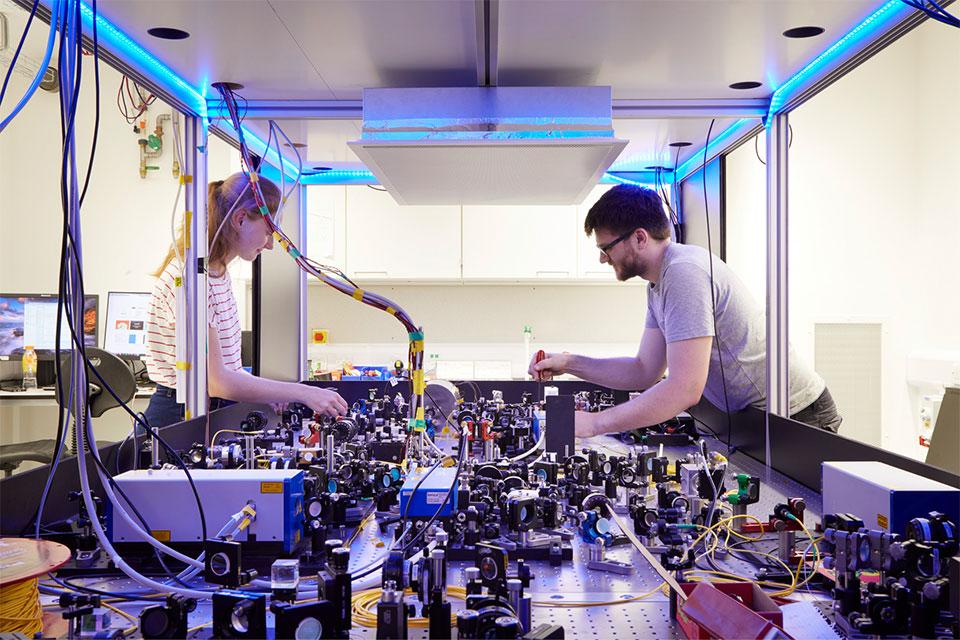Beecroft Building
Dr Alexis Casner (CEA-CESTA)
Abstract
Following the trend initiated 10 years ago for our long-duration drive Ablative Rayleigh-Taylor experiments [1, 2], I will present the spin-off projects of our initial Discovery Science proposal. They share the very basic idea of harnessing the behemoth energy and pulse duration of MJ scale facilities to explore unchartered regimes of high energy density plasma. The most straightforward exploration is to drive the Rayleigh-Taylor Instability (RTI) which develops at the ablation front in turbulent-like conditions [2]. We are currently investigating the dependency on initial conditions and ablation velocity on the final RTI bubble-merger regime. To do so, we accelerate a planar sample during 40 ns by almost 0.5 MJ of laser energy [3]. Prior to the RTI, theory predicts the possibility of the Landau-Darrieus Instability (LDI) [4]. Well-known in the combustion and flame physics community, I will explain how we tuned our NIF Direct-Drive platform to observe LDI for the first time in the context of laser-driven ablation fronts. Our experimental findings are supported by a novel analytical model and benchmarked against FLASH simulations. To finish, I will present our plans to study the Kelvin-Helmholtz Instability in a compressible, magnetized plasma. While the stabilizing effect of a tangential magnetic field along the velocity shear is well known since Chandrasekhar’s book, few experimental validations have been performed so far. Future experiments scheduled on NIF in 2023-2024 may have strong implications for planetary magnetospheres, as well as for magnetized Inertial Confinement Fusion.
These experiments were made possible by long-term collaborators from LLNL (V.A. Smalyuk, D.A. Martinez, S. F. Khan), CEA (L. Masse) and former PhDs (C. Maillet, T. Goudal and V. Bouffetier) and postdoctoral research associates (L. Ceurvorst, G. Perez-Callejo).
[1] A. Casner et al, Designs for highly nonlinear Ablative Rayleigh-Taylor experiments on the National Ignition Facility. Physics of Plasmas 19, 082708 (2012).
[2] A. Casner et al, From ICF to laboratory astrophysics: ablative and classical Rayleigh-Taylor instability experiments in turbulent-like regimes. Nuclear. Fusion 59, 032002 (2019).
[3] L. Ceurvorst et al, Post-processing of face-on radiographic images for quantitative analysis in ablative Rayleigh-Taylor instability experiments. High Energy Density Physics 37, 100851 (2020).
[4] J. Sanz, L. Masse and P. Clavin. The linear Darrieus-Landau and Rayleigh-Taylor instabilities in inertial confinement fusion revisited. Physics of plasmas, 13(10), p.102702 (2006).
[5] V. Bouffetier et al, Numerical design for Kelvin-Helmholtz instability mitigation by a preimposed intense external magnetic field, submitted to Physics of Plasmas.
Short Bio
His career in Inertial Confinement Fusion (ICF) began in 2003 when he was hired at CEA DAM. He has performed CEA indirect drive experimental campaigns relevant for ablative Rayleigh—Taylor instability (aRTI) in ICF targets on the OMEGA laser from 2003 to 2010. He was also in charge as coordinator of CEA campaigns on LIL and LMJ from 2008 to 2017. Meanwhile, he has been involved as Principal Investigator on the NIF since 2011, where he has lead 5 NIF Discovery Science proposals. Dr Casner was awarded the 2017 Prize Fabre “for his outstanding contributions in the field of ICF, hydrodynamic instabilities and x-ray imaging diagnostics”. He started with Dr Ribeyre the experimental collaboration around Shock Ignition between LLE and CELIA in 2010. Almost one collaborative campaign has been performed every year since then. He served in the Executive C ommittee of the NIF User Group from 2011 to 2016, in the Omega Laser User Group from 2017 to 2020. Currently Research Director at CEA DAM, he is also Deputy Director at Centre Lasers Intenses et Applications (CELIA), University of Bordeaux. Dr Casner wrote more than 80 publications in peer-reviewed journals, 25 as lead author.

